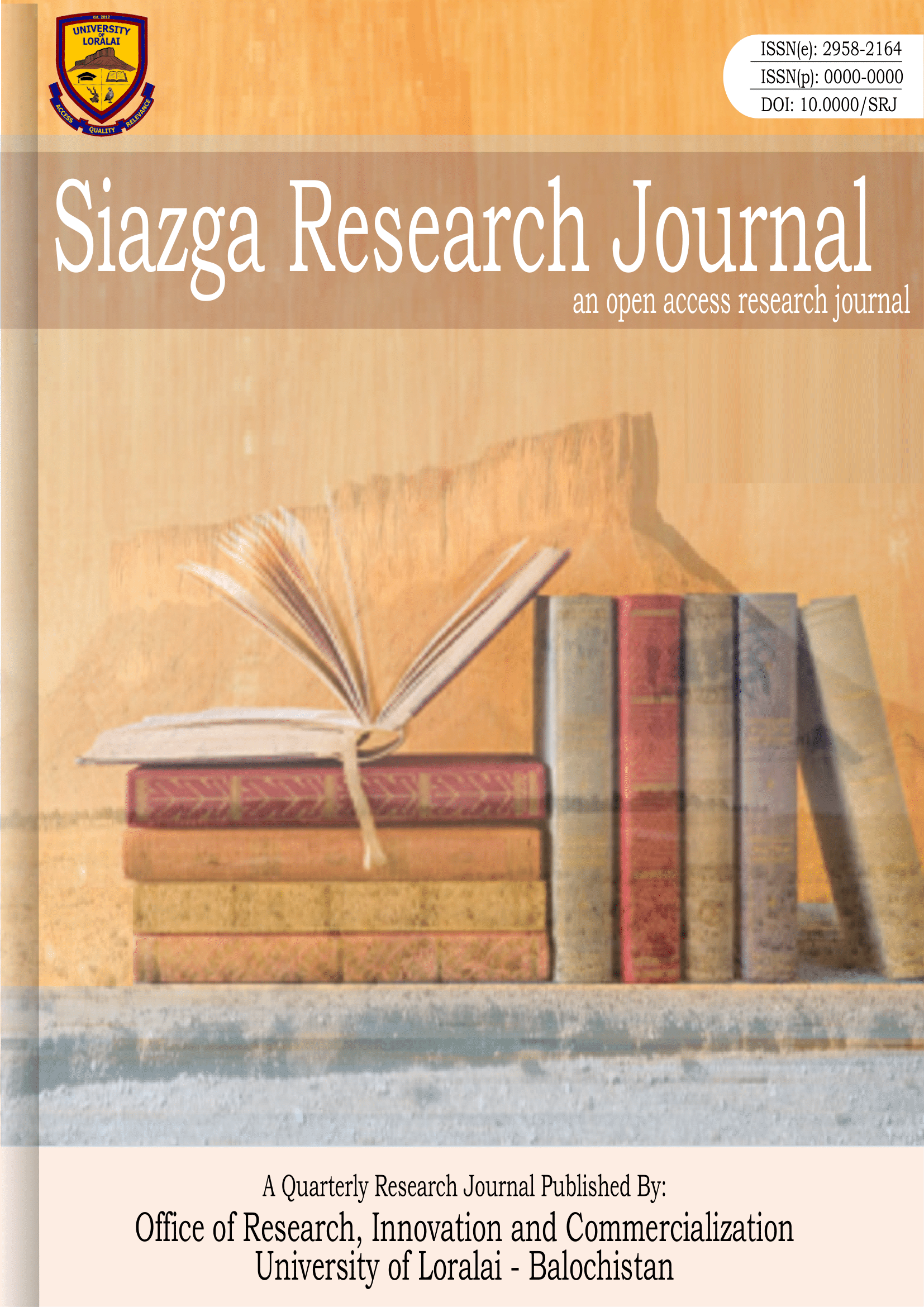The Art of Blending In
Unveiling Camouflaging Traits in Adults with or Without Autism
DOI:
https://doi.org/10.58341/srj.v2i4.34Abstract
Camouflaging a complex behavioral and social phenomenon commonly associated with individuals on the autism spectrum, takes center stage in this study. However, it doesn't stop at autism; it delves into the intriguing realm of camouflaging strategies employed by both adult individuals with and without autism. Additionally, the research further investigates the influence of gender on these camouflaging behaviors. This quantitative study exposes notable distinctions in camouflaging traits between adults with and without autism. Individuals with autism spectrum frequently utilize camouflaging to replicate socially accepted behaviors, such as maintaining eye contact and suppressing repetitive actions, in order to integrate into society and escaping potential stigmatization. Nevertheless, this adaptive coping strategy can exact a toll on their mental health & well-being, resulting in heightened stress, anxiety, and mental exhaustion. Remarkably, the research also highlights that camouflaging isn't unique to autism; individuals without autism also harness these strategies in various social situations. These individuals may adjust their body language, behavior, emotional expressions, and appearance to align with dominant societal norms, foster social harmony, or seamlessly integrate into specific social circles. This indicates that camouflaging is a broader phenomenon rooted in the universal human impulse for social adaptation and compliance. Moreover, the study underscores the significance influence of gender expectations on the adoption of camouflaging strategies. It notes that camouflaging appears to be more prevalent among females, irrespective of their autism status, reflecting the unique social challenges and societal expectations faced by women across various cultural landscapes. In essence, this research illuminates the multifaceted nature of camouflaging behaviors and their far-reaching implications. It emphasizes the vital importance of comprehending these behaviors and their potential impacts on individuals' overall mental health & well-being. Moreover, the study advocates for further exploration of the long-term effects of camouflaging and the creation of interventions focused on promoting authenticity in social interactions while alleviating the need for excessive camouflaging efforts.
Keywords:
Camouflaging, compensation, masking, assimilation, adults, autismReferences
Altenmüller, M. S., Fligge, M., & Gollwitzer, M. (2023). Among Us: Fear of Exploitation, Suspiciousness, and Social Identity Predict Knowledge Hiding Among Researchers. Social Psychological Bulletin, 18, 1-22.
Cage, E., & Troxell-Whitman, Z. (2019). Understanding the reasons, contexts and costs of camouflaging for autistic adults. Journal of autism and developmental disorders, 49(5), 1899-1911.
Chapman, L., Rose, K., Hull, L., & Mandy, W. (2022). “I want to fit in… but I don’t want to change myself fundamentally”: A qualitative exploration of the relationship between masking and mental health for autistic teenagers. Research in Autism Spectrum Disorders, 99, 102069.
Cook, J., Crane, L., Hull, L., Bourne, L., & Mandy, W. (2022). Self-reported camouflaging behaviours used by autistic adults during everyday social interactions. Autism, 26(2), 406-421. https://journals.sagepub.com/doi/full/10.1177/13623613211026754
Cremone, I. M., Carpita, B., Nardi, B., Casagrande, D., Stagnari, R., Amatori, G., & Dell’Osso, L. (2023). Measuring Social Camouflaging in Individuals with High Functioning Autism: A Literature Review. Brain Sciences, 13(3), 469.
Fombonne, E. (2020). Camouflage and autism. Journal of Child Psychology and Psychiatry, 61(7), 735-738. https://acamh.onlinelibrary.wiley.com/doi/full/10.1111/jcpp.13296#jcpp13296-bib-0012
Hannon, B., Mandy, W., & Hull, L. (2023). A comparison of methods for measuring camouflaging in autism. Autism Research, 16(1), 12-29.
Hossain, M. A. (2023). Neuro-camouflaging is an Indicator of Human Camouflage, an Assumption of Brain Engineering for Self-protection against Criminal Attacking.
Hull, L., Mandy, W., Lai, M. C., Baron-Cohen, S., Allison, C., Smith, P., & Petrides, K. V. (2019). Development and validation of the camouflaging autistic traits questionnaire (CAT-Q). Journal of autism and developmental disorders, 49, 819-833.
Hull, L., Petrides, K. V., & Mandy, W. (2021). Cognitive predictors of self‐reported camouflaging in autistic adolescents. Autism Research, 14(3), 523-532. https://onlinelibrary.wiley.com/doi/full/10.1002/aur.2407
Hull, L., Petrides, K. V., & Mandy, W. (2020). The female autism phenotype and camouflaging: A narrative review. Review Journal of Autism and Developmental Disorders, 7, 306-317.
Jedrzejewska, A., & Dewey, J. (2022). Camouflaging in autistic and non-autistic adolescents in the modern context of social media. Journal of autism and developmental disorders, 1-17.
Kurbanovna, A. D., & Aubakirovna, A. B. (2023). Personal Psychological Adaptation and its Characteristics. International journal of inclusive and sustainable education, 2(2), 68-70. http://inter-publishing.com/index.php/IJISE/article/view/1061/911
O'Loghlen, J. J., & Lang, C. P. (2023). High Autistic Traits or Low Social Competence? Correlates of Social Camouflaging in Non-Autistic Adults. Autism in Adulthood. https://www.liebertpub.com/doi/abs/10.1089/aut.2022.0094
Petrolini, V., Rodríguez-Armendariz, E., & Vicente, A. (2023). Autistic camouflaging across the spectrum. New Ideas in Psychology, 68, 100992. https://www.sciencedirect.com/science/article/pii/S0732118X22000629
Rehman, F., Sajjad, S., & Saleem, S. (2022a). Camouflaging Traits in Adults with Autism Spectrum Disorder. Journal of Social Sciences and Media Studies, 6(2), 28-41.
Rehman, F., Sajjad, S., & Saleem, S. (2022b). Mental Well-being of Adults with Autism Spectrum Disorder. Human Nature Journal of Social Sciences, 3(4), 456-466.
Roach, C. (2023). Gender Differences in Autism Spectrum Disorder. https://spark.bethel.edu/etd/960/
Sajjad, S., Rehman, F., & Siddiqui, S. (2023). HIDDEN STRUGGLES: SHEDDING LIGHT ON DEPRESSION AND ANXIETY IN ADULTS WITH AUTISM SPECTRUM CONDITION. Pakistan Journal of Educational Research, 6(2). http://pjer.org/index.php/pjer/article/view/834
Stevens, M., & Merilaita, S. (2009). Animal camouflage: current issues and new perspectives. Philosophical Transactions of the Royal Society B: Biological Sciences, 364(1516), 423-427.
Downloads
Published
How to Cite
License
Copyright (c) 2023 Siazga Research Journal

This work is licensed under a Creative Commons Attribution 4.0 International License.


